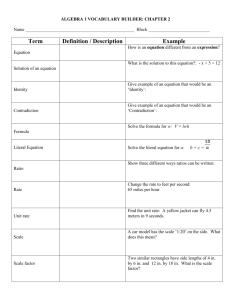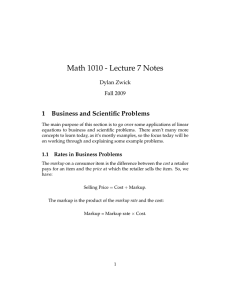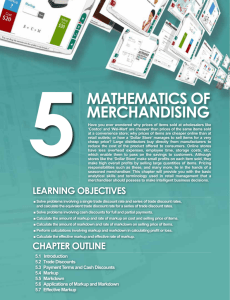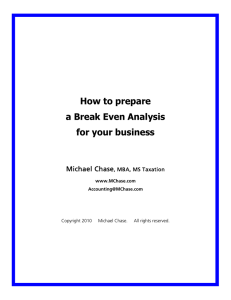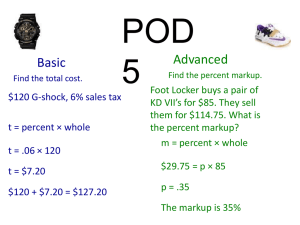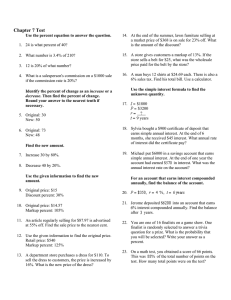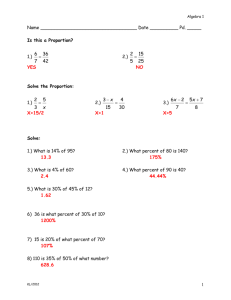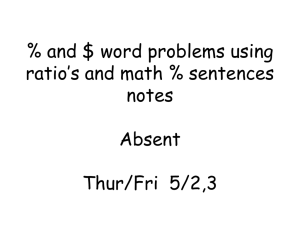Math 1010 - Lecture 7 Notes 1 Business and Scientific Problems Dylan Zwick
advertisement
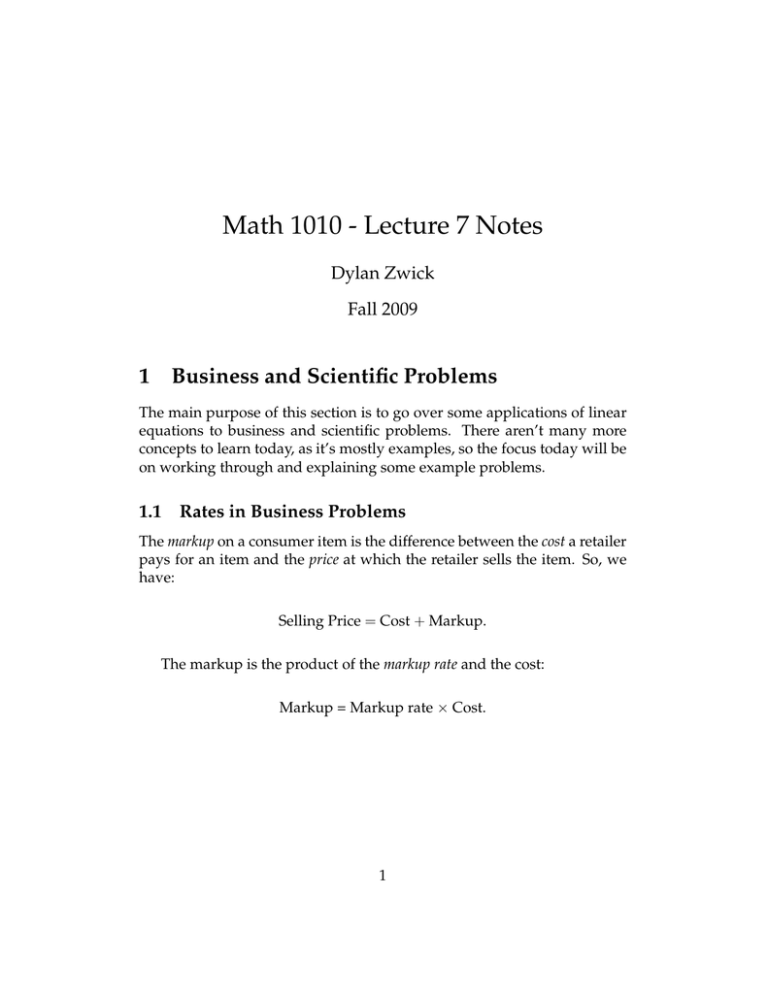
Math 1010 - Lecture 7 Notes Dylan Zwick Fall 2009 1 Business and Scientific Problems The main purpose of this section is to go over some applications of linear equations to business and scientific problems. There aren’t many more concepts to learn today, as it’s mostly examples, so the focus today will be on working through and explaining some example problems. 1.1 Rates in Business Problems The markup on a consumer item is the difference between the cost a retailer pays for an item and the price at which the retailer sells the item. So, we have: Selling Price = Cost + Markup. The markup is the product of the markup rate and the cost: Markup = Markup rate × Cost. 1 Examples: 1. The selling price of a jacket in a department store is $157.14. The cost of the jacket to the store if $130.95. What is the markup? 2. What is the markup rate? The method for a discount is similar to that for a markup: Selling price = List price − Discount and the discount rate is defined as: Discount = Discount rate × List price. Examples: 1. A bakery sells a dozen rolls for $2.25. You can buy a dozen day-old rolls for $0.75. What is the discount? 2. What is the discount rate? 2 1.2 Rates in Mixture Problems Many real-life problems involve combinations of two or more quantities that make up new quantities. Such problems are called mixture problems. For example, you may have a coin that’s 70% silver and 30% nickel by volume, with a total volume of 1 cm3 , and you want to know its mass given the respective densities of silver and nickel. Here our formula would be: .70 × 1cm3 × (Density of silver) + .30 × 1cm3 × (Density of nickel) = Total mass. This is an example of our general rate formula for mixture problems involving two elements: First rate × Amount + Second rate × Amount = Final rate × Final amount. Example : A grocer mixes two kinds of nuts costing $3.88 per pound and $4.88 per pound to make 100 pounds of a mixture costing $4.28 per pound. How many pounds of each kind of nut are in the mixture? 3 1.3 Classic Rate Problems Time-dependent problems such as distance traveled at a given speed and work done at a specific rate are classic types of rate problems. The distancerate-time problem fits the verbal model Distance = Rate × Time. So, for example, if you’re traveling in a car your rate would just be your speed. So, again for example, 35 mph could be your rate. In work-rate problems, the rate of work is the reciprocal of the time needed to do a job. This makes some intuitive sense. If you get the job done faster, your work rate will be higher. Per hour work rate = 1/(Total hours to complete a job). Examples: 1. You ride your bike at an average speed of 15 miles per hour for 3 13 hours. How far do you ride? 2. (Harder one) It takes 30 minutes for a pump to empty a water tank. A larger pump can empty the tank in half the time. How long would it take to empty the tank with both pumps operating? 4 1.4 Formulas There are many common formulas that show up all the time in real world applications. A number of these come from geometry. I won’t list these all in class, but some of the ones given in your book are below. On page 85 of your book there’s a longer list, with associated pictures. Area of a square = s2 Area of a rectangle = l × w Perimeter of a rectangle = 2l + 2w 4 Volume of a sphere = πr 3 3 and so on. These should all hopefully be familiar to you from geometry. If not, please be sure to review them. As I said, these formulas can be found on page 85 of your book. Example: A rectangular stained glass window has a perimeter of 18 feet. The height of the window is 1.25 times its width. Find the width of the window. 5 Finally, a very common real-world linear equation is the formula for converting Celsius to Fahrenheit: 9 F = C + 32. 5 Example: The average daily low temperature in December in Kansas City is 23◦ F . In December, what is Kansas City’s average daily low temperature in degrees Celsius? 6
